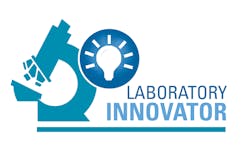Why did you decide to leave your position as Vice President of Finance at Labcorp in 1997 to launch XIFIN?
Will you briefly describe the changes to PAMA (Protecting Access to Medicare Act of 2014) reporting requirements and payment cuts that were enacted in the Coronavirus Aid, Relief, and Economic Security Act?
As a result of the pandemic, on March 27, 2020, the Cares Act was passed with provisions that delayed the scheduled 2021 fee reduction until 2022. The act also capped reductions from 2022-2024 at 15%. (It was previously capped at 10%, 2018-2020, rising to a 15% cap in 2021). Additionally, the next data reporting period was delayed until Q1 2022, while the collection period remained the same (January 1, 2019-June 30, 2019). This provided the lab industry with much needed reimbursement reduction relief. Previously the Lab Act (passed in 2019) had also authorized MedPAC to review the methodology used for PAMA data collection by CMS to provide some relief regarding the data collection burden. That report is expected to be out in June of this year.
What steps do you recommend that lab managers take to prepare for the upcoming cut to reimbursement for clinical diagnostic laboratory tests that is now set to be implemented Jan. 1, 2022?
The fee calculation from the original data set represented approximately a 30% cut on the top 25 tests taken over a three-year period because of the 10% cap on cuts for the first three years. Even though the cap will be 15% in 2020, the cuts are expected to be less than 10%. Lab managers need to make sure that they are optimizing returns and minimizing costs through greater automation and more efficient processes; or potentially outsourcing this administrative function to achieve better results, while providing them with a variable cost structure that will immediately adjust to volume fluctuations.
How do you expect federal payment policy for laboratory services to evolve in the future?
The upcoming MedPAC report is likely to streamline the data collection methodology for data collection related to PAMA. At the same time, Office of the Inspector General reports and MedPAC observations will shift focus to molecular/genetic testing, which represents the highest growth in our industry. Separately, the pandemic has resulted in a much-needed state- and federal-government focus on the health of the diagnostic network in the U.S. and an understanding of the impact of excessive rate cutting on lab capacity. This has enabled dialogue between legislators and the industry to review, and perhaps modify, some of the PAMA guidelines that have resulted in a race to the bottom from a reimbursement perspective, instead of establishing a true market price. This may result in modifications in the PAMA language that would bring more balance to the pricing exercise.
What overall approach to laboratory reimbursement have commercial payers taken, and how do you expect this to evolve in the future?
Commercial payers have followed published Medicare rates in their own rate structures for the most part, which is one reason why the PAMA exercise could not produce legitimate market rates that reflected the true cost structure of performing individual tests. As was expected, once the PAMA rates were published, many of the major payers followed suit in cutting rates all the way to the PAMA rate, without capping their cuts at the 10% level that PAMA required for Medicare. Payers have now shifted greater focus to narrowing the number of providers in-network, establishing restrictions on coverage by limiting payment of tests to certain conditions, creating pre-authorization requirements, contracting with lab benefits managers to further limit payment and establishing internal criteria, as we see with organizations like UHC. Some of these shifts include a preferred lab network or designated diagnostic provider criteria to limit in-network labs to those with best pricing and technical capabilities.
You have been active in the California Clinical Laboratory Association for many years. What is your role at the organization, and how does it fit into the overall mission of the organization?
I have chaired the state and federal contractor committees for CCLA for years, maintaining a working relationship with the Department of Health and Human Services. I was recognized by the association with a Lifetime Achievement Award.


